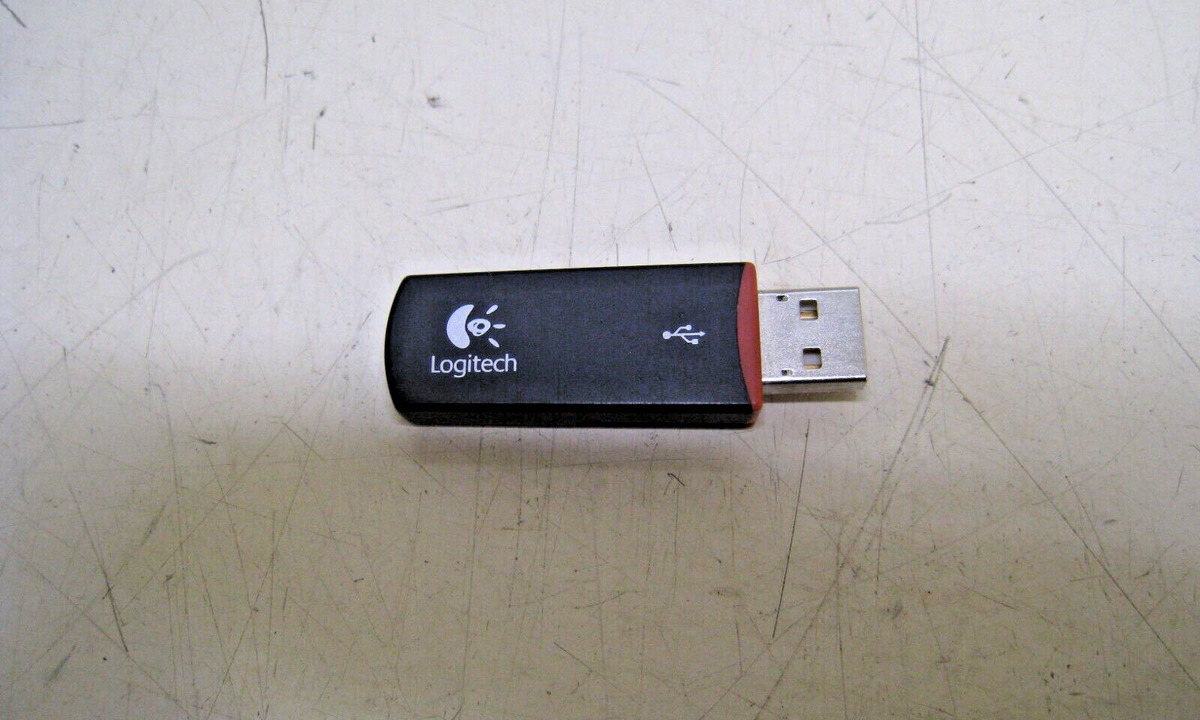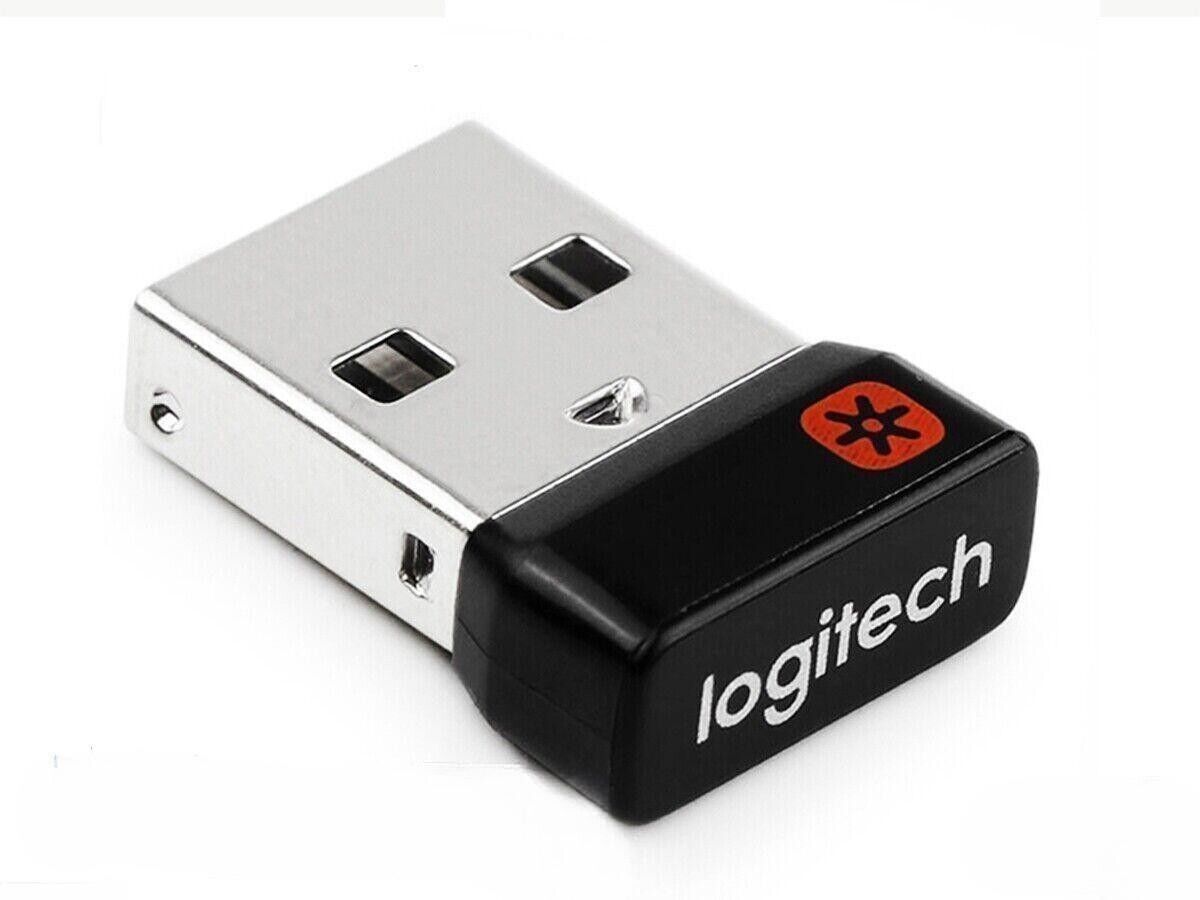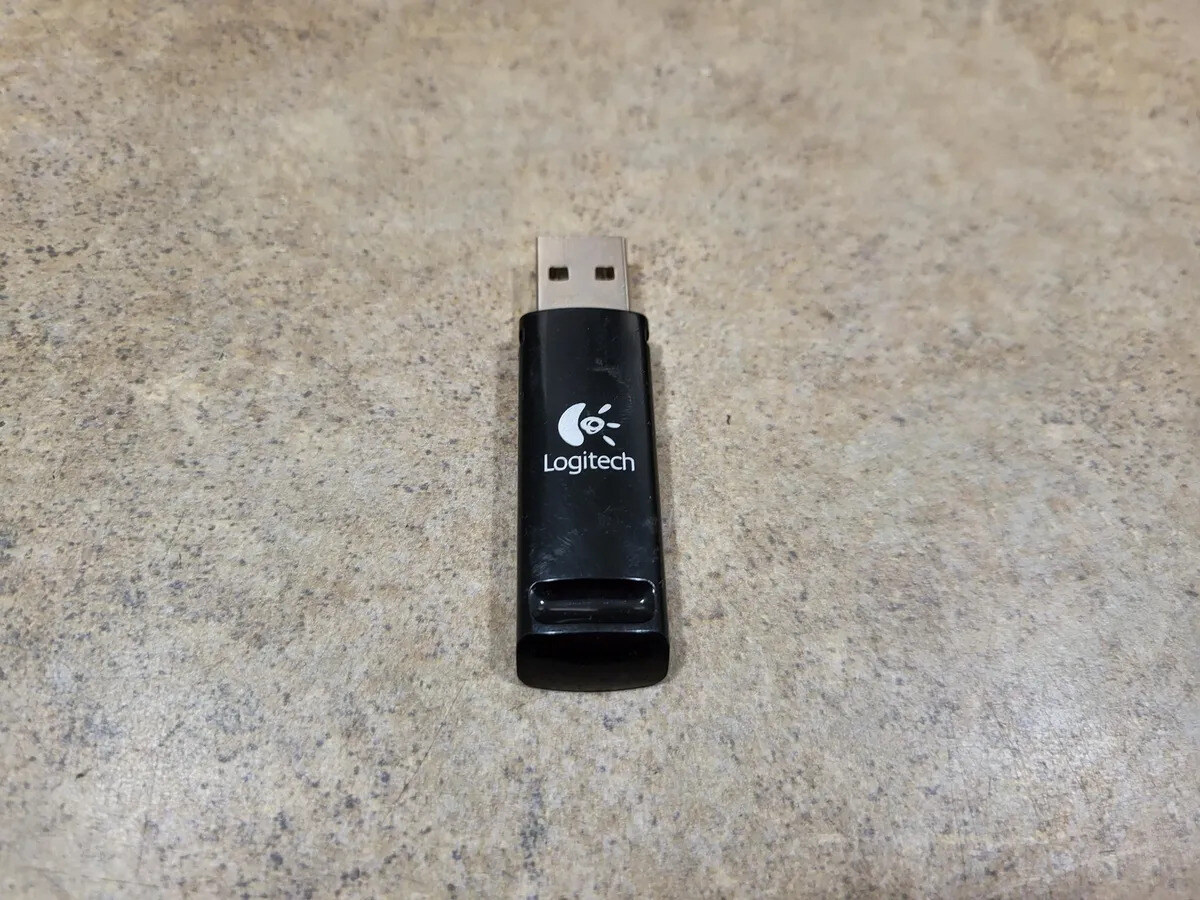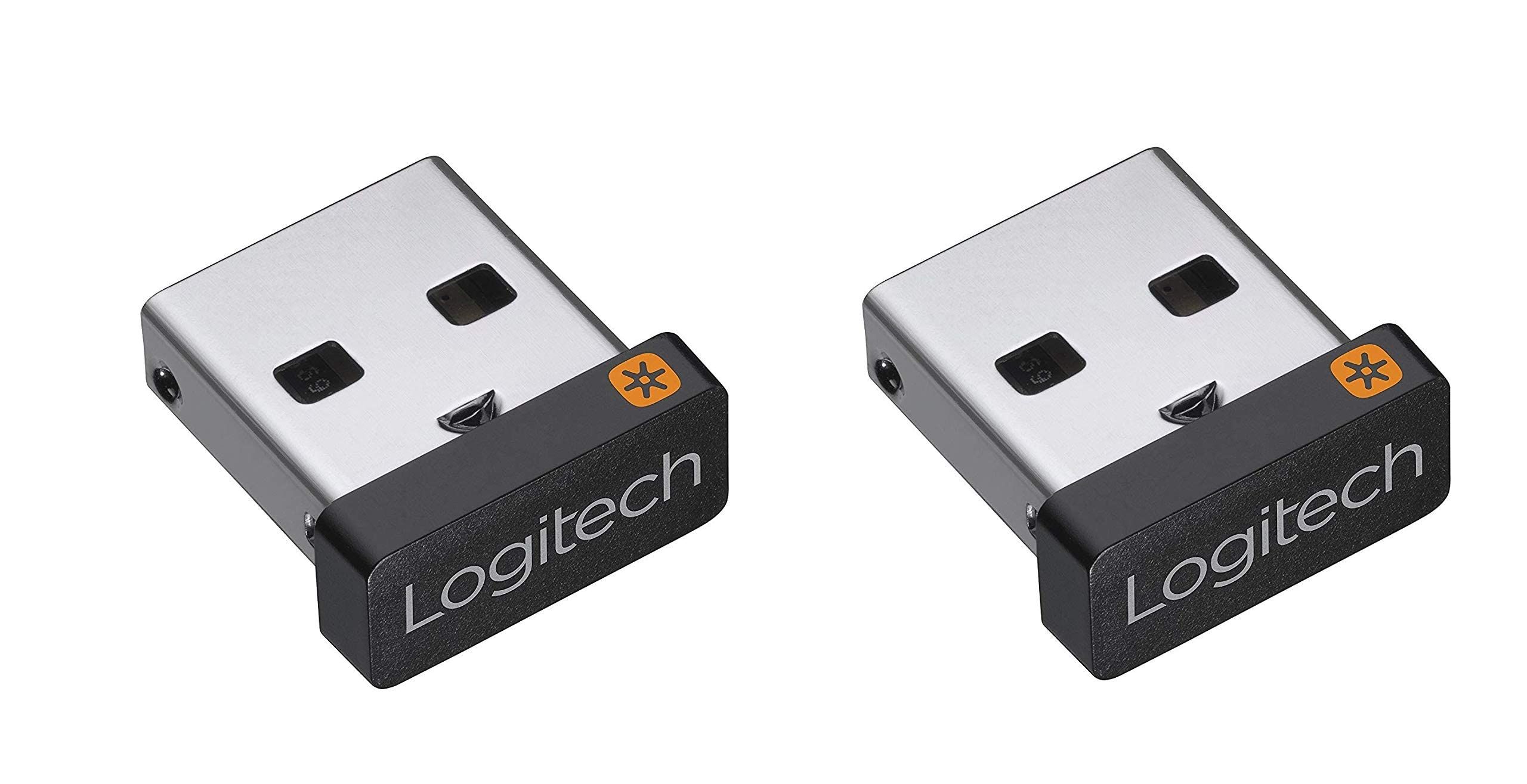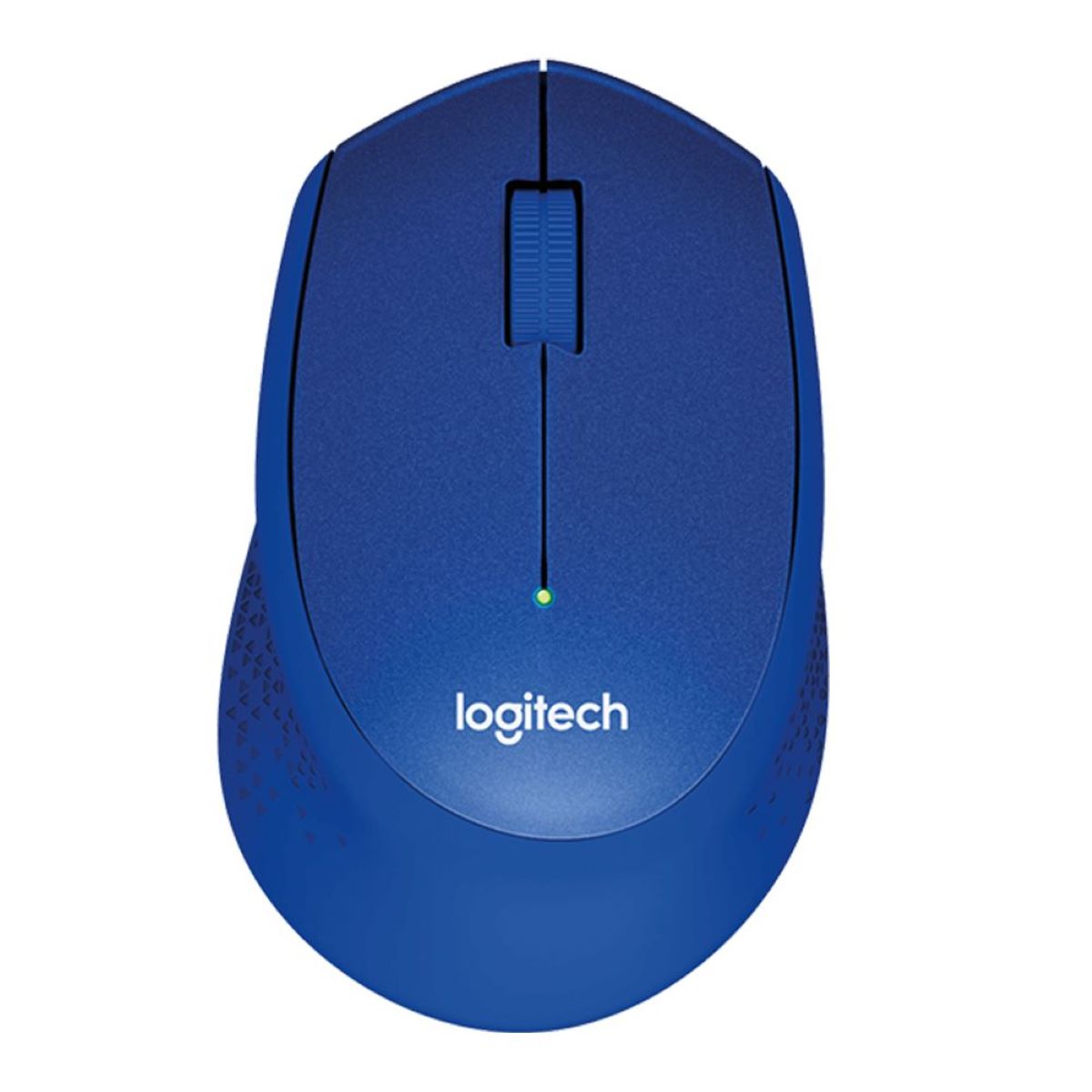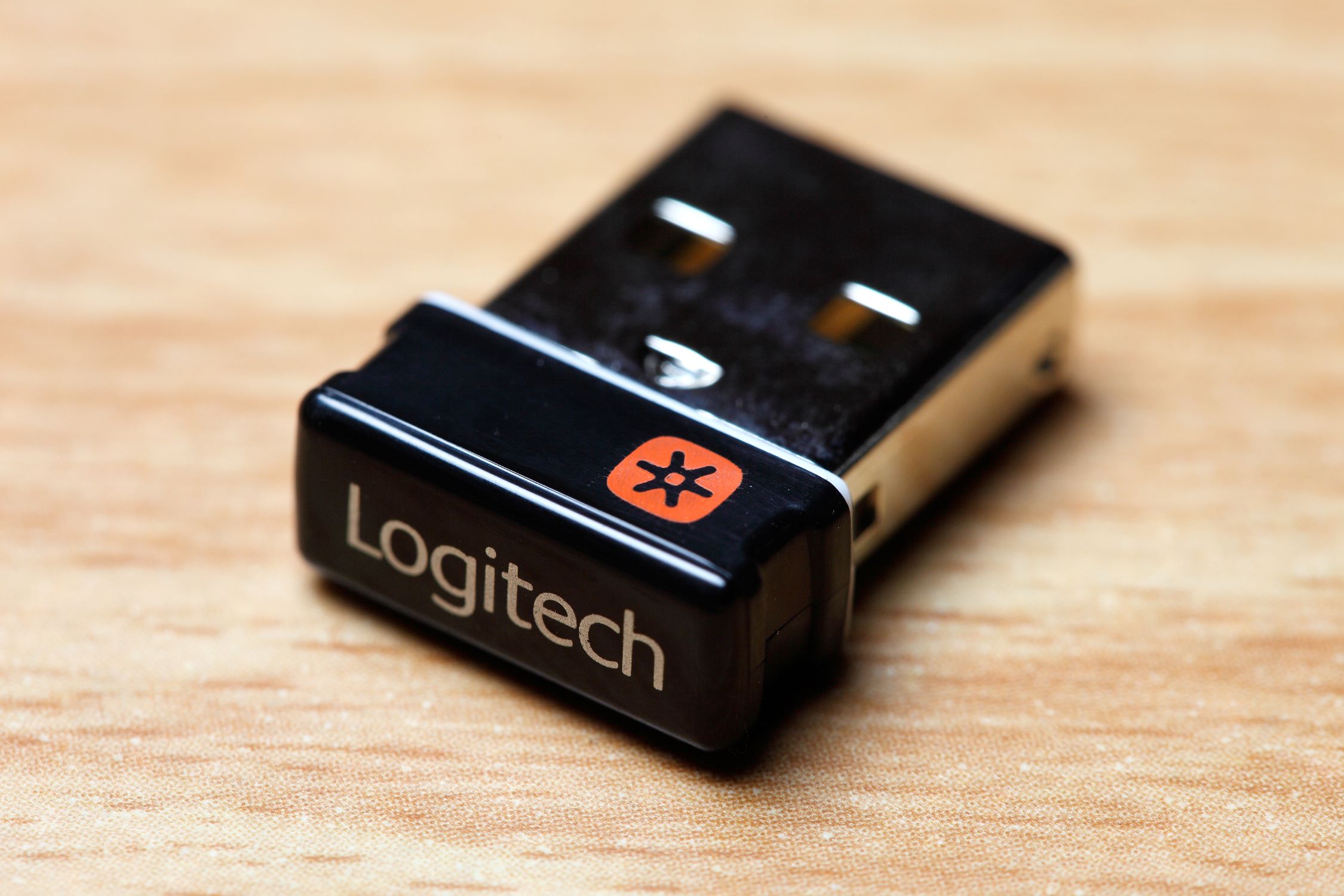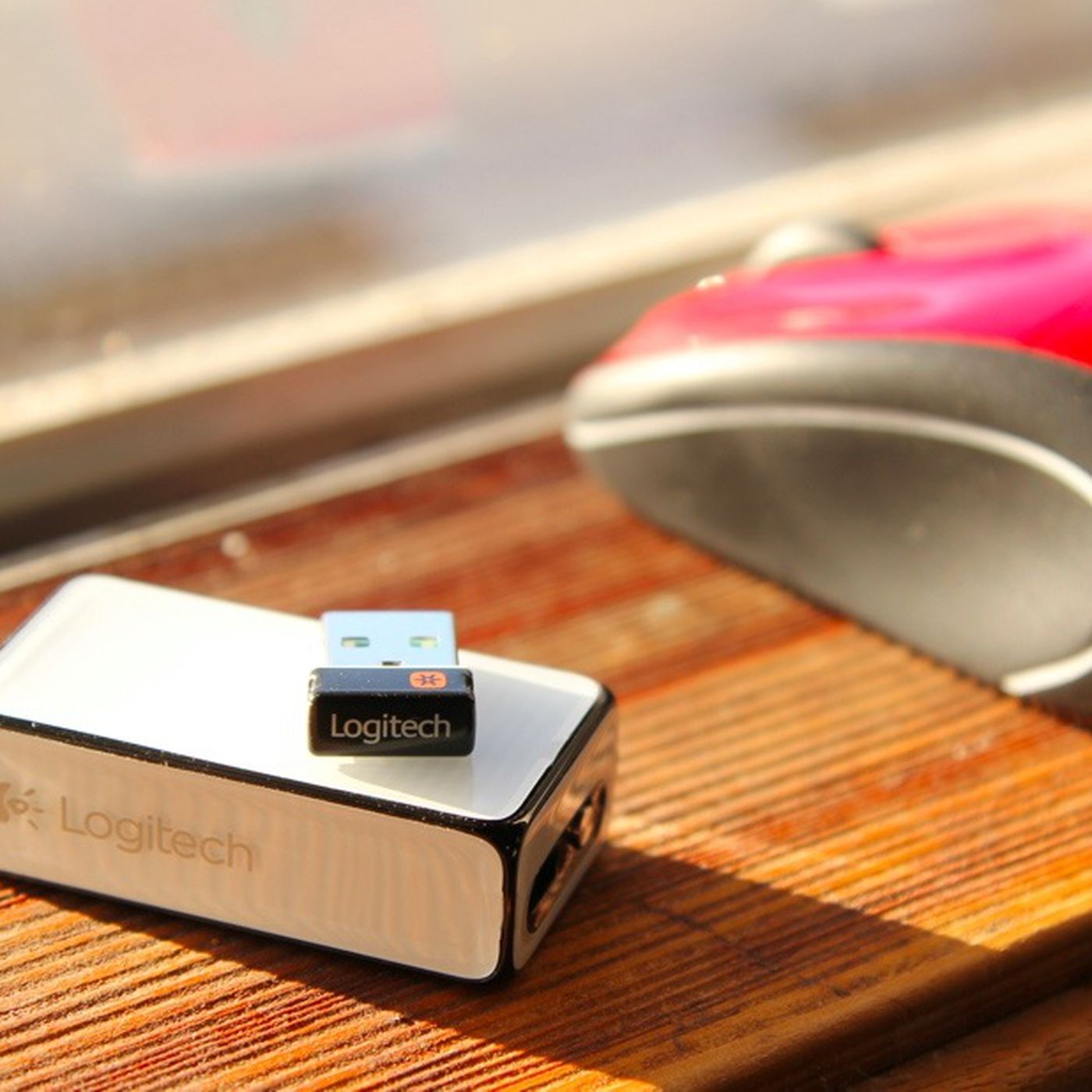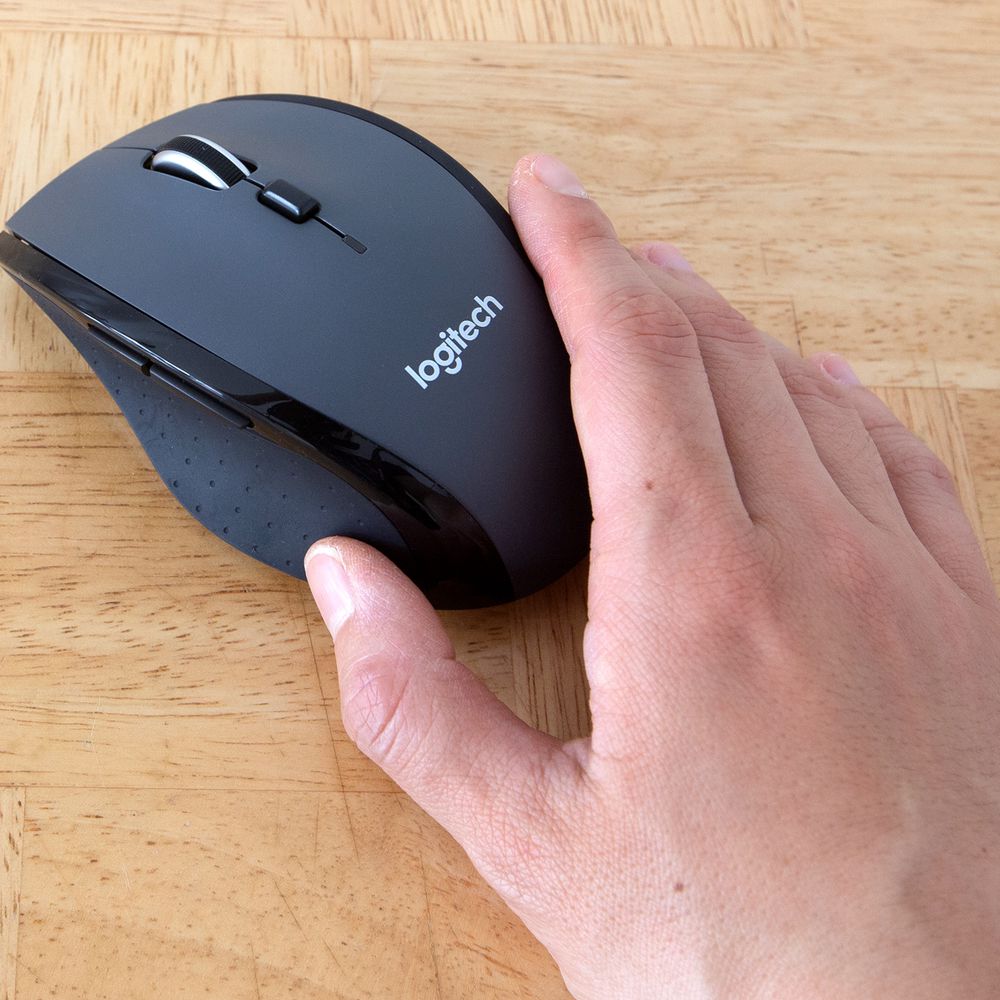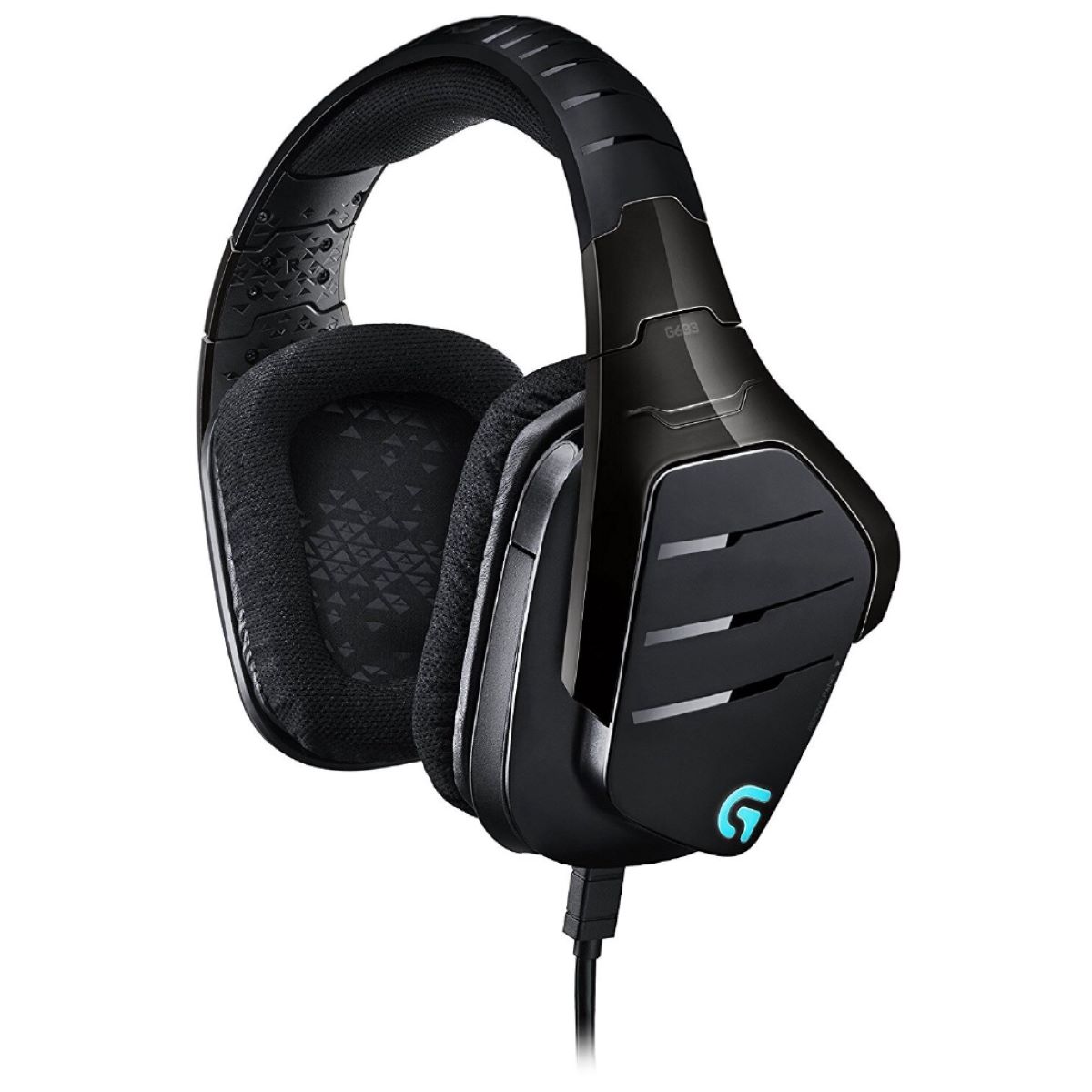Introduction
Losing your Logitech USB receiver can be frustrating, especially if it means you can no longer use your Logitech devices properly. The USB receiver is a crucial component that allows your Logitech wireless devices, such as keyboards, mice, and other peripherals, to connect to your computer.
In this article, we will explore some steps you can take when you find yourself in the unfortunate situation of losing your Logitech USB receiver. These steps will help you find a solution or alternative method to continue using your Logitech devices without the receiver.
While it’s essential to remember that the Logitech USB receiver is specific to Logitech devices and may not be compatible with other brands, we will also discuss some alternative connectivity options that you can consider.
So, if you’re wondering what to do if you lost your Logitech USB receiver, stay calm, and follow the steps outlined in this article. We’ll guide you through the process of finding a replacement or alternative solution to get your Logitech devices up and running again.
Remember, losing your USB receiver is not the end of the world. Logitech provides various options to help you resolve this issue and continue enjoying the functionality of your Logitech devices. Let’s explore these steps in more detail.
Steps to Take When You Lose Your Logitech USB
Losing your Logitech USB receiver can be a frustrating experience, but there are several steps you can take to resolve the issue and continue using your Logitech devices. Here’s what you can do if you find yourself in this situation:
1. Stay Calm and Recheck: Before taking any further actions, retrace your steps and carefully search for the USB receiver. Sometimes, it might be hiding in an unexpected place. Stay calm and take your time to thoroughly check your surroundings.
2. Contact Logitech Support: If you’re unable to locate the USB receiver, reach out to Logitech’s customer support. They may be able to provide guidance and offer solutions based on your specific device and situation. Logitech Support can be contacted through their website or by phone, and their representatives are usually knowledgeable and helpful.
3. Purchase a Replacement USB Receiver: If your Logitech device is still under warranty, Logitech may provide a replacement USB receiver at no cost. However, if your warranty has expired or does not cover this type of damage, you may need to purchase a replacement receiver. Check Logitech’s official website or authorized retailers for the specific USB receiver that matches your device.
4. Consider a Universal USB Receiver: Alternatively, you can explore the option of using a universal USB receiver. These receivers work with multiple brands and models of wireless devices, including Logitech products. However, compatibility may vary, so make sure to research and choose a reliable universal USB receiver that supports your Logitech device.
5. Get a Bluetooth Adapter: If your Logitech device supports Bluetooth connectivity, you can invest in a Bluetooth adapter for your computer. This will enable you to connect your wireless Logitech devices, such as keyboards or mice, to your computer without the need for a USB receiver.
6. Assess the Device Compatibility: In some cases, Logitech devices with a Unifying logo may be compatible with the Logitech Unifying software. This software allows you to connect multiple Logitech devices using a single USB receiver. Check if your device is compatible and download the software from Logitech’s website.
7. Use the Unifying Software: If your Logitech device is compatible with the Unifying software, follow the instructions provided to connect your device(s) using the software. This will save you the hassle of purchasing a replacement USB receiver.
8. Explore Alternative Connectivity Options: Lastly, consider if there are other connectivity options available for your Logitech device. Some Logitech devices offer wired connections, while others support Wi-Fi or other wireless technologies. Check the device’s manual or Logitech’s website to explore these options and determine if they are feasible for your needs.
By following these steps, you can find a solution or alternative method to continue using your Logitech devices even without the USB receiver. Remember, losing the USB receiver is frustrating, but it doesn’t mean the end for your Logitech devices. Stay proactive, explore the available options, and get back to enjoying the functionality and convenience they offer.
Stay Calm and Recheck
Losing your Logitech USB receiver can be a stressful experience, but the first step is to stay calm and composed. Panicking will only make it harder to think clearly and remember where you last saw the USB receiver.
Take a few deep breaths and start retracing your steps. Begin by going back to the place where you last used your Logitech device. Check if the USB receiver is still plugged into your computer or if you left it on your desk. Sometimes, it may have fallen into a hidden corner or gotten stuck between papers.
Next, expand your search to the surrounding area. Look under furniture, behind cushions, or even in pockets where it might have accidentally slipped. Don’t forget to check other locations where you frequently use your Logitech devices, such as your office, living room, or any other place where you may have used them recently.
Additionally, consider asking anyone who may have access to the area if they have seen the USB receiver. It’s possible that someone may have picked it up, thinking it belonged to them. Collaborating with others in your household or office can help widen the search and increase the chances of finding it.
If you still can’t locate the USB receiver after a thorough search, it’s time to move on to the next steps. Remember, losing a USB receiver is not the end of the world, and there are alternatives available to get your Logitech devices up and running again.
Before proceeding, it’s important to validate whether you have indeed lost the USB receiver. Double-check all USB ports on your computer to ensure you haven’t accidentally plugged it into a different port or into a USB hub. It’s easy to overlook this simple mistake, and resolving it will save you time and effort.
In this digital age where we rely heavily on technology, misplacing small accessories like USB receivers can happen to anyone. So, take a deep breath, retrace your steps meticulously, and remain positive as you move forward with finding a solution or alternative method to continue using your Logitech devices without the USB receiver.
Contact Logitech Support
If you’ve searched high and low for your Logitech USB receiver and still can’t find it, it’s time to reach out to Logitech’s customer support team for assistance. Logitech provides excellent customer support and is dedicated to helping its customers resolve their issues.
To contact Logitech support, visit their official website and look for the support or contact section. They usually have a dedicated support page where you can find resources, FAQs, and contact information. You can either submit a support ticket or find their phone number for direct assistance.
When contacting Logitech support, it’s essential to provide them with relevant details about your device, including the model number and any other identifiable information. This will help them understand your situation better and provide you with accurate solutions specific to your Logitech device.
Explain that you have lost your Logitech USB receiver and inquire about your options for obtaining a replacement. If your device is still under warranty, Logitech may offer a complimentary replacement USB receiver. However, if your warranty has expired or does not cover this type of situation, they may guide you on purchasing a replacement USB receiver.
Logitech’s customer support representatives are knowledgeable and experienced. They can provide you with guidance on the best course of action to get your Logitech devices functioning again. They may also have additional tips or suggestions that you hadn’t considered, so be open to their advice.
Remember to remain patient and polite when communicating with Logitech support. They are there to assist you, and displaying a positive attitude can go a long way in ensuring a smooth resolution to your issue. Keep in mind that solving this problem may take some time, so be prepared for potential delays in response times.
Taking the initiative to contact Logitech support shows your commitment to finding a solution. They are your best resource when it comes to resolving issues related to Logitech devices, so don’t hesitate to reach out to them for help. By working together, you can find the most appropriate solution to get your Logitech devices back up and running.
Purchase a Replacement USB Receiver
If you’ve been unable to locate your lost Logitech USB receiver and your device is not covered by warranty, purchasing a replacement receiver is a viable solution. Logitech offers replacement USB receivers for their devices, allowing you to continue using your Logitech peripherals without interruption.
To ensure compatibility, visit Logitech’s official website or authorized retailers that sell Logitech products. Look for the specific USB receiver that matches your Logitech device model. Logitech provides detailed information about each receiver, including the devices it is compatible with, to help you make the right choice.
When purchasing a replacement USB receiver, it’s crucial to verify the authenticity of the product. Counterfeit receivers may not function properly and can potentially cause software issues. Stick to authorized sellers to ensure you receive a genuine Logitech product.
Once you have obtained the replacement USB receiver, follow the instructions provided with the receiver to pair it with your Logitech device. These instructions may vary depending on the specific device and receiver model. In most cases, the pairing process involves inserting the new USB receiver into an available USB port on your computer and following the setup prompts.
Keep in mind that purchasing a replacement USB receiver may come at a cost. Therefore, consider whether the cost of the replacement receiver is worth it compared to the value and functionality of your Logitech device. If you have multiple Logitech devices, it may be more cost-effective to purchase a Unifying USB receiver, which enables you to connect multiple Logitech devices using a single receiver.
Before finalizing your purchase, double-check that the replacement receiver is the correct model and compatible with your Logitech devices. You can consult Logitech’s customer support or refer to the product specifications for validation.
By purchasing a replacement USB receiver, you can restore the functionality of your Logitech devices and continue using them as before. Although it may involve a financial investment, it can save you from having to buy entirely new Logitech devices. So, weigh your options, verify compatibility, and make an informed decision to keep your Logitech devices working seamlessly.
Consider a Universal USB Receiver
If you’re looking for a more versatile solution when you’ve lost your Logitech USB receiver, consider using a universal USB receiver. These receivers are designed to work with multiple brands and models of wireless devices, including Logitech peripherals.
A universal USB receiver allows you to connect various wireless devices to your computer without the need for specific brand-specific receivers. It eliminates the hassle of purchasing multiple replacement receivers for different devices and offers a more streamlined experience.
When opting for a universal USB receiver, it’s crucial to ensure its compatibility with your Logitech device. While most universal receivers support a wide range of devices, including Logitech, it’s essential to check the receiver’s specifications and compatibility list to ensure it works with your specific Logitech peripherals.
To find a reliable universal USB receiver, start by researching reputable brands that specialize in wireless connectivity solutions. These brands often offer detailed product information, compatibility guides, and customer support to assist you in choosing the right receiver for your needs.
When purchasing a universal receiver, consider factors like range, compatibility with different operating systems, and any additional features or functionalities it may offer. Read customer reviews and seek recommendations from other users who have used it with Logitech devices to ensure its reliability and performance.
Once you have the universal USB receiver, follow the provided instructions for pairing it with your Logitech device. The pairing process may differ depending on the brand and model of the receiver, but it typically involves plugging it into an available USB port on your computer and following the setup prompts.
It’s important to note that while a universal USB receiver can be a convenient solution, it may not provide the same level of integration and functionality as the manufacturer’s original receiver. Some advanced features specific to Logitech devices may not be fully supported with a universal receiver. Therefore, assess your needs and consider if the functionalities provided by the universal receiver are sufficient for your usage.
Before making a purchase, verify that the universal USB receiver is from a reputable brand and ensure it has a return policy in case it doesn’t meet your expectations or compatibility needs.
Using a universal USB receiver can rescue your Logitech devices from being rendered unusable due to the loss of the original receiver. It offers a cost-effective and versatile solution by allowing you to connect various wireless devices to a single receiver. So, explore the options available and make an educated decision to keep your Logitech devices connected and functioning.
Get a Bluetooth Adapter
If your Logitech device supports Bluetooth connectivity, getting a Bluetooth adapter can be an excellent alternative to using a USB receiver. Bluetooth adapters allow you to connect your Logitech wireless devices, such as keyboards or mice, to your computer without the need for a physical USB receiver.
To get started, check if your Logitech device has built-in Bluetooth capability. Many newer Logitech devices, particularly those designed for mobile devices or tablets, come equipped with Bluetooth technology. If your device doesn’t have built-in Bluetooth, you’ll need to purchase a Bluetooth adapter that is compatible with your computer.
When selecting a Bluetooth adapter, make sure it supports the version of Bluetooth required by your Logitech device. Bluetooth versions are backward compatible, but using a newer version can offer better performance and functionality.
Once you have your Bluetooth adapter, install it on your computer following the manufacturer’s instructions. Typically, it involves plugging the adapter into a USB port and allowing your computer to recognize and install the necessary drivers.
After the installation, make sure Bluetooth is enabled on your computer and put your Logitech device into pairing mode. Refer to the device’s manual for the specific steps to enable Bluetooth and initiate pairing. Once your device is in pairing mode, the Bluetooth adapter should detect it, and you can complete the pairing process.
Keep in mind that using a Bluetooth adapter may have slight differences in functionality compared to using the Logitech USB receiver. For example, some advanced features specific to Logitech devices may not be available when using Bluetooth connectivity. However, for basic functionality, a Bluetooth adapter is a convenient and viable option.
Before purchase, read reviews and check compatibility with your Logitech device and operating system to ensure a seamless experience. Additionally, familiarize yourself with the return policy of the Bluetooth adapter in case you encounter any issues during setup or compatibility.
Using a Bluetooth adapter offers the flexibility of wireless connectivity without the need for a physical USB receiver. It allows you to connect your Logitech devices to your computer effortlessly, eliminating the worries of misplacing or losing a USB receiver. So, consider getting a Bluetooth adapter for a convenient and reliable alternative to using a USB receiver with your Logitech devices.
Assess the Device Compatibility
When you’ve lost your Logitech USB receiver, it’s essential to assess the compatibility of your Logitech device with alternative connectivity options. This step will help you determine which solutions are available and appropriate for your specific Logitech device.
Start by checking the manufacturer’s documentation, such as the user manual or Logitech’s website, to identify the compatible connectivity options for your Logitech device. Some devices may support multiple connectivity methods, including Bluetooth, Wi-Fi, or direct wired connections.
If your Logitech device supports Bluetooth, you can take advantage of its built-in Bluetooth capability and pair it with your computer, eliminating the need for a USB receiver. However, ensure that your computer also supports Bluetooth to establish a seamless connection.
For devices that offer Wi-Fi connectivity, you may be able to connect them directly to your computer or home network without the need for a USB receiver or Bluetooth adapter. Check if your Logitech device has this capability and follow the provided instructions to set up the Wi-Fi connection.
In some instances, your Logitech device may even offer a direct wired connection option. This approach involves connecting your device to your computer using a physical cable, providing a stable and reliable connection. Check if your Logitech device has the proper ports and cables required for a wired connection.
It’s important to note that not all Logitech devices offer alternative connectivity options. Some older or specific-purpose devices may rely solely on the Logitech USB receiver for wireless connectivity. In such cases, obtaining a replacement receiver or exploring universal receiver options may be your best course of action.
When assessing the compatibility of your Logitech device, consider your specific needs and usage requirements. Evaluate the functionality and convenience provided by each alternative connectivity option and choose the one that best suits your needs.
If you’re unsure about the compatibility of your Logitech device or need further assistance, reach out to Logitech support or consult their online resources. They can provide you with accurate information regarding the connectivity options available for your specific Logitech device.
By assessing the compatibility of your Logitech device with alternative connectivity options, you can determine the most viable solution to continue using your device without the USB receiver. Whether it’s Bluetooth, Wi-Fi, or a wired connection, exploring these options can provide you with a seamless and reliable method of staying connected and enjoying the functionality of your Logitech device.
Use the Unifying Software
If your Logitech device bears the Unifying logo, you may have the option to utilize Logitech’s Unifying software. This software enables you to connect multiple Logitech devices using a single USB receiver, eliminating the need for individual receivers for each device.
To begin, visit Logitech’s official website and download the Unifying software for your computer. Install the software following the provided instructions. Once installed, connect the Logitech Unifying USB receiver to an available USB port on your computer.
Next, put your Logitech devices into pairing mode by following the instructions specific to each device. Typically, this involves pressing a pairing button or switch located on the device. The Unifying software will detect the devices and guide you through the pairing process.
During the pairing process, you can choose which Logitech devices you want to connect to the Unifying USB receiver. This allows you to easily switch between multiple devices without the hassle of disconnecting and reconnecting individual receivers.
It’s important to note that not all Logitech devices are compatible with the Unifying software. Only devices that bear the Unifying logo can be connected using this method. Therefore, verify the compatibility of your Logitech devices before attempting to use the Unifying software.
Using the Unifying software provides a convenient and clutter-free solution for managing multiple Logitech devices. It simplifies the process of connecting and switching between devices, making it easier to use your Logitech peripherals seamlessly.
Additionally, the Unifying software offers customization options for your Logitech devices. You can configure button assignments, scrolling speed, and other settings depending on the capabilities of your specific Logitech device. Explore the software’s features to tailor the functionality of your devices to your preferences.
If you encounter any difficulties during the setup or pairing process, refer to Logitech’s support documentation or reach out to their customer support for assistance. They can provide you with guidance and troubleshooting steps specific to the Unifying software and your Logitech devices.
By utilizing Logitech’s Unifying software, you can connect multiple Logitech devices using a single USB receiver, reducing clutter and simplifying the management of your peripherals. Take advantage of this convenient option if your Logitech devices are compatible, and enjoy a streamlined and efficient experience with your Logitech devices.
Explore Alternative Connectivity Options
If traditional methods have not yielded the desired results in finding a replacement or alternative for your lost Logitech USB receiver, it’s time to think outside the box and explore other connectivity options. Logitech devices often offer various ways to connect and interact with your computer or other devices.
One alternative connectivity option is to utilize the built-in wired connections available on some Logitech devices. Check if your Logitech device has a USB cable or other wired connection option. By connecting your device directly to your computer using these cables, you can bypass the need for a USB receiver altogether.
Another possibility is to consider devices that are compatible with wireless technologies other than Bluetooth. Logitech offers devices that use Wi-Fi or proprietary wireless technologies for connectivity. These devices might not require a USB receiver or Bluetooth adapter and can directly connect to your computer or other compatible devices.
In addition to wired and alternative wireless connectivity options, Logitech devices may also have compatibility with specific platforms or operating systems. For example, certain Logitech devices are designed specifically for macOS or Windows and have optimized integration with these systems. Exploring Logitech’s website or consulting their support documentation can provide insights into these compatibility options.
Moreover, consider the possibility of upgrading your Logitech device to a newer model that incorporates advanced connectivity options or is specifically designed to work without a USB receiver. Logitech continuously releases new products with improved features and connectivity options, and it may be worth exploring if an upgrade makes sense for your needs.
Furthermore, some Logitech devices are designed to work with specific docking stations or hubs, allowing for a centralized connection point for multiple devices. These docking stations or hubs often utilize wired connections or alternative wireless technologies to connect your Logitech devices to your computer or other devices.
When exploring alternative connectivity options, it’s important to consider your specific requirements and ensure compatibility with your existing devices and systems. Reading product specifications, user reviews, and consulting Logitech’s customer support can provide valuable insights and guidance in making the right choice.
Remember to exercise patience and thorough research when considering alternative connectivity options. Losing a USB receiver can be frustrating, but it also presents an opportunity to explore new possibilities and potentially improve your overall setup and user experience.
By exploring alternative connectivity options, you might discover innovative and efficient ways to connect your Logitech devices without relying on a USB receiver. Embrace the possibilities, stay open to new solutions, and enjoy the convenience and functionality that Logitech devices bring to your daily activities.
Conclusion
Losing your Logitech USB receiver can be a frustrating experience, but it doesn’t mean you have to give up on using your Logitech devices. By following the steps outlined in this article, you can find a solution or alternative method to continue using your Logitech devices without the USB receiver.
Start by staying calm and rechecking your surroundings to ensure that the USB receiver is truly lost. Next, contact Logitech support for assistance and guidance. They can provide information about warranty coverage, replacement options, and troubleshooting advice.
Consider purchasing a replacement USB receiver if necessary, ensuring compatibility with your specific Logitech device. Alternatively, explore the option of using a universal USB receiver that works with various brands and models of wireless devices.
If your Logitech device supports Bluetooth connectivity, getting a Bluetooth adapter can be a convenient solution. This allows you to connect your Logitech devices wirelessly without the need for a USB receiver.
Assess the compatibility of your Logitech device with alternative connectivity options such as Wi-Fi, wired connections, or specific platforms. By understanding your device’s capabilities, you can find the best solution to keep your devices connected.
Lastly, explore Logitech’s Unifying software if your device is compatible. This software allows you to connect multiple Logitech devices using a single USB receiver, providing a streamlined and efficient experience.
In conclusion, losing your Logitech USB receiver may be discouraging, but there are several steps you can take to overcome this setback. Stay proactive, reach out to Logitech support, and explore the available alternatives. With patience and perseverance, you can continue enjoying the functionality and convenience that Logitech devices offer.







